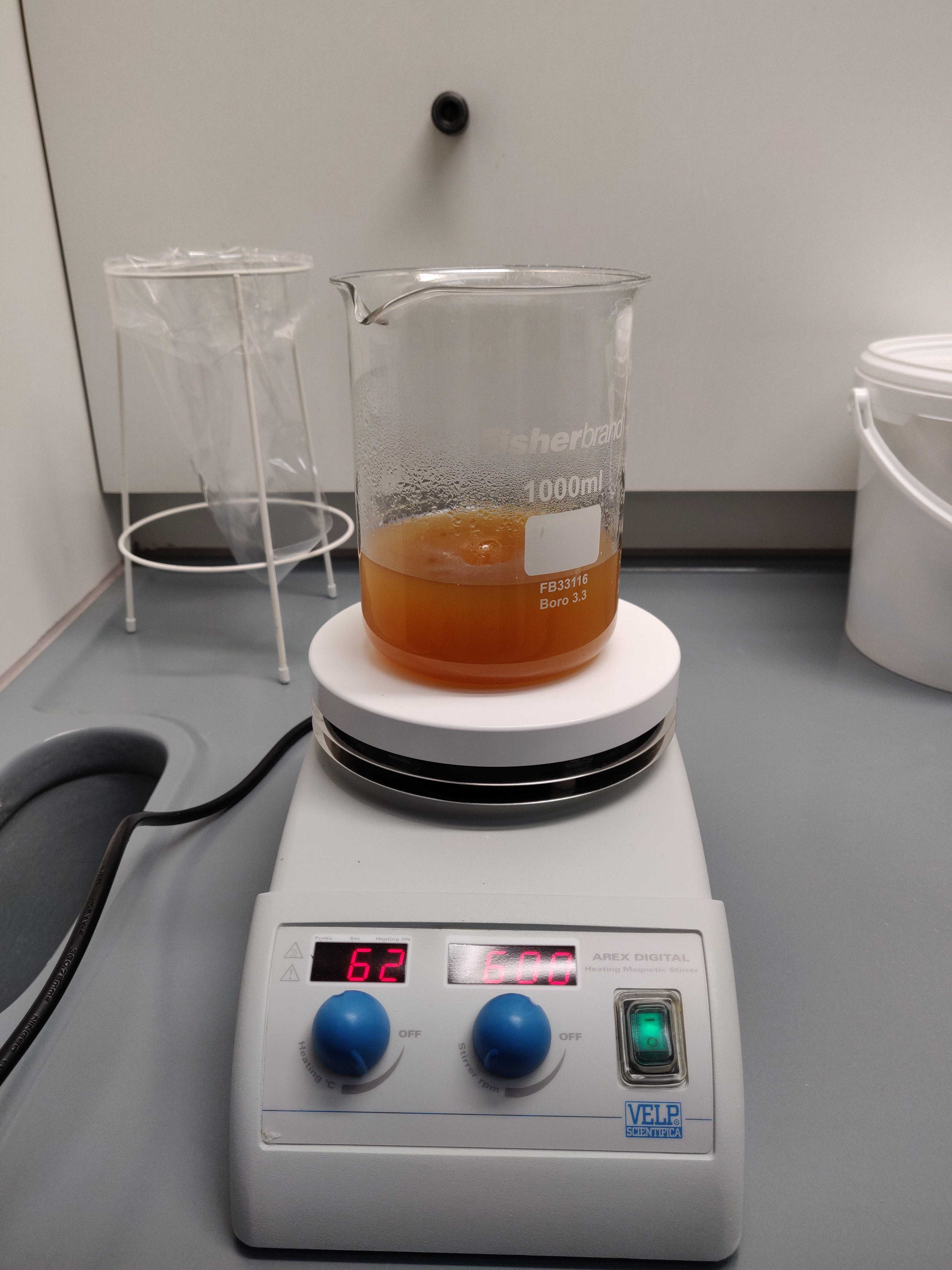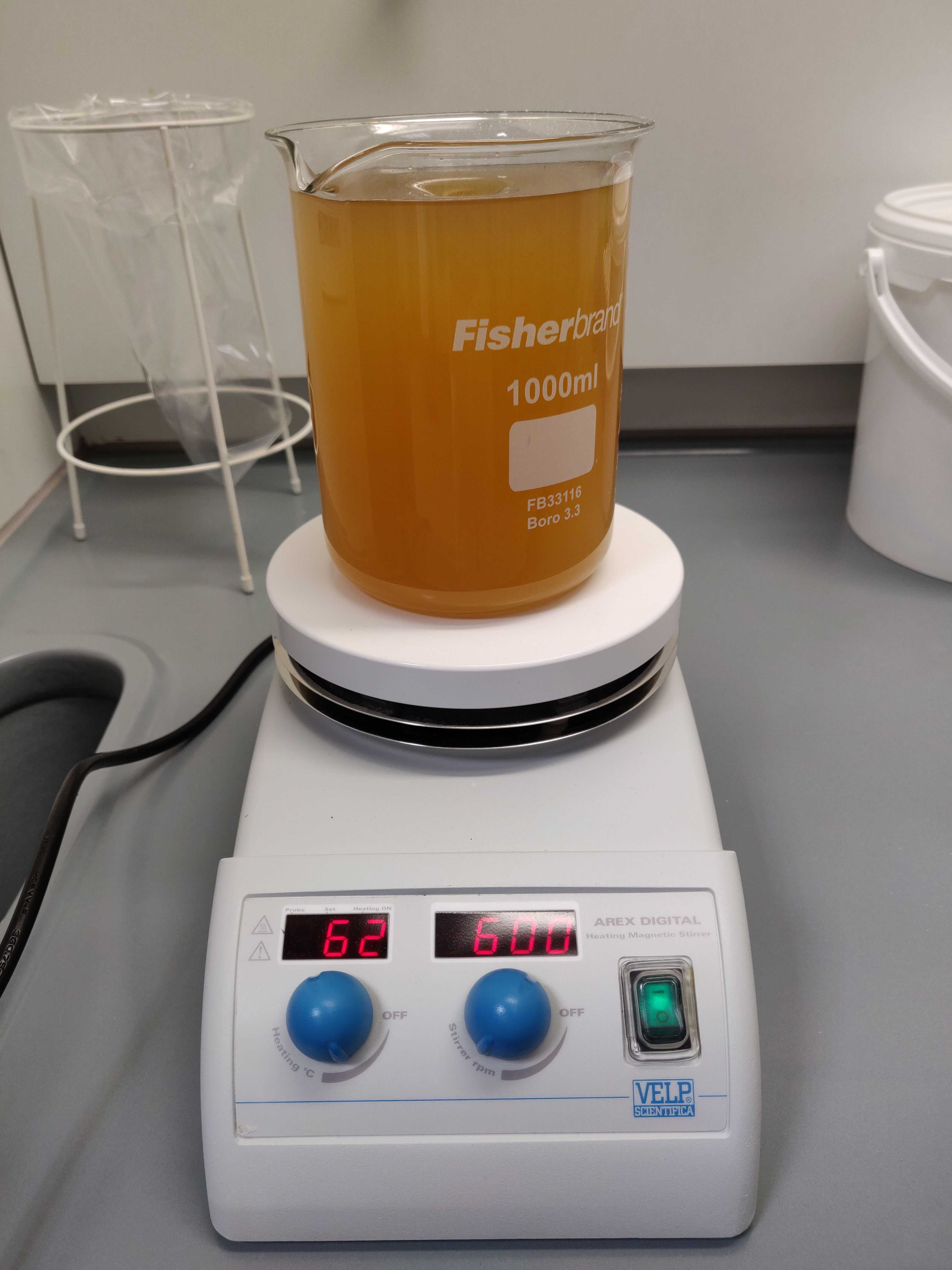Artificial saliva
a.g.henry, Bjørn Peare Bartholdy
Abstract
Creating an artificial saliva solution for oral biofilm growth, specifically dental calculus.
This is a modified version of Sissons et al. 1991.
Before start
Mix the solution under a fumehood. It can smell pretty bad.
Also have the incubator under a fumehood, if possible. I had no such luxury...
Steps
Add 300mL distilled (or deionized) dH2O to a 1000mL beaker, with stirring and heat 60°C .
Add:
-
2.5g -
0.35g -
0.2g -
0.74g -
0.54g -
2.5mg
Adjust to 7 with
Transfer to two 1000 ml bottles, so around half of each bottle is filled.
Autoclave at 121°C , 1 Bar for 0h 15m 0s minutes
Once the solution has cooled, combine solutions to a single 1000ml bottle, and add:
1mg0.3g0.17g
Store in fridge at ca. 4°C
Occasionally test the pH of the solution to ensure it stays around 7



